Some of the links in this post may be affiliate links.
Have you been wondering what the best pot type is for your Monstera? There really are many considerations in choosing the right Monstera pot for your plant AND for you! Keep reading for more details to learn more.
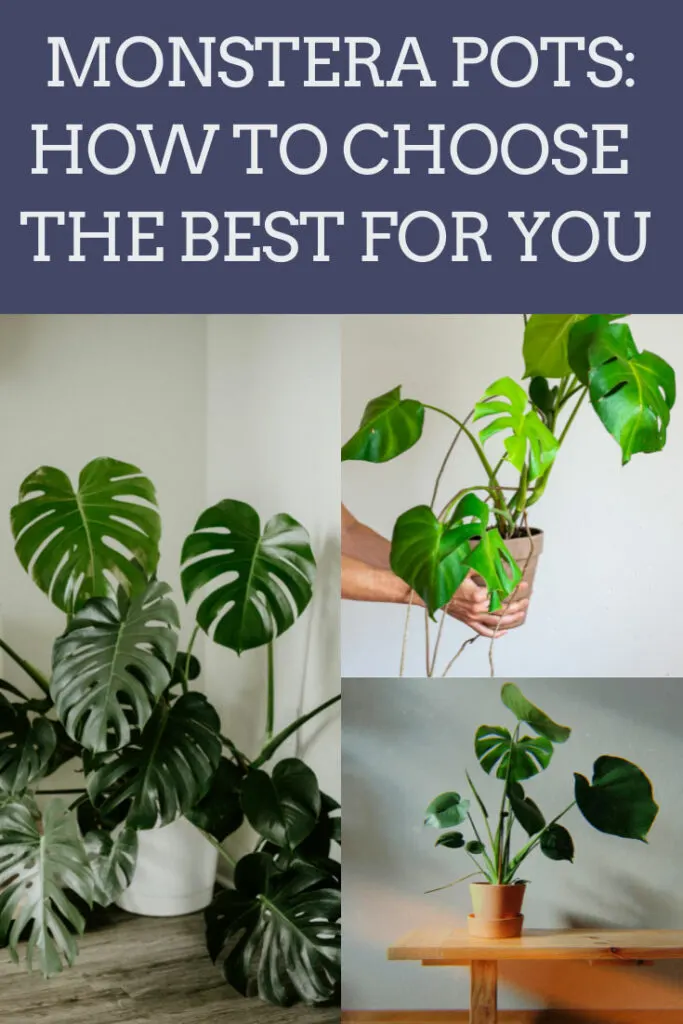
Table of Contents
MONSTERA POT TYPE CONSIDERATIONS
The 3 main considerations in choosing the right Monstera pot for your plant are the following:
- Size of the pot
- Weight of the pot
- Pot construction
Let me elaborate on this list, because each of these items is important and has pros and cons.
1. SIZE OF THE POT
The size of the pot is critically important with any plant, and Monstera deliciosa is no exception. When it comes time to repot your Monstera, as a general rule of thumb, I always advise going up 1 pot size, and no bigger.
For example, if your plant is in a 6 inch diameter pot and you need to repot, only go up to an 8 inch diameter pot.
Why is this? If your pot size is too large, the excess volume of potting mix will take too long to dry out and can cause you issues, especially if your plant is not growing in enough light.
And because of this reason, it’s generally always better to choose a Monstera pot that’s on the smaller end versus too large.
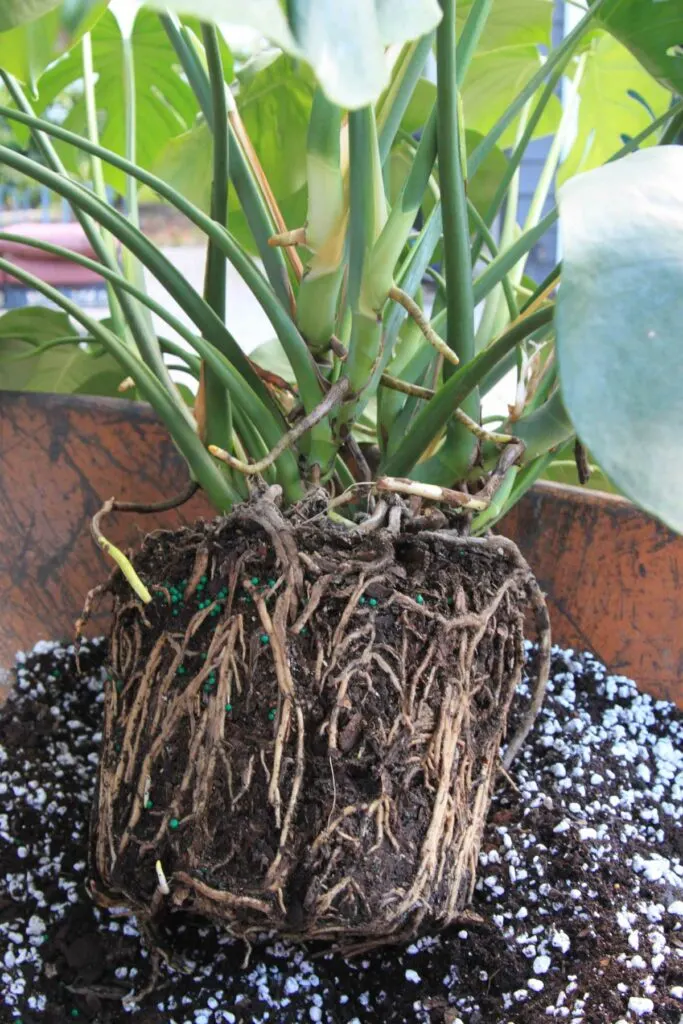
For tips on repotting, check out my blog post on Monstera care and repotting.
If you’re looking for an amazing potting mix that you can use straight out of the bag for your Monstera, check out the Tropical Climber Soil Blend from Oh Happy Plants. This is an amazing mix and you will get 10% off at checkout automatically if you use my link.
2. WEIGHT OF THE POT
Now it’s going to get a little more complicated, because the weight of your pot is going to be an important factor.
If you have a smaller Monstera deliciosa plant, it won’t matter as much, but as your plant grows, I suggest using a heavier pot, such as either terra cotta or glazed ceramic pot. (I elaborate more on these pots in the next section.)
Why? Because Monstera deliciosa is a vining plant, and as it grows, you’ll need to provide a support for it (such has a bamboo tripod or moss pole) and it will need a heavier pot in order to be stable so no one is knocking over your plant.
If you have your plant in a lighter plastic pot and your plant is growing tall, and your potting mix has dried out, the top-heavy plant can be quite easy to knock over.
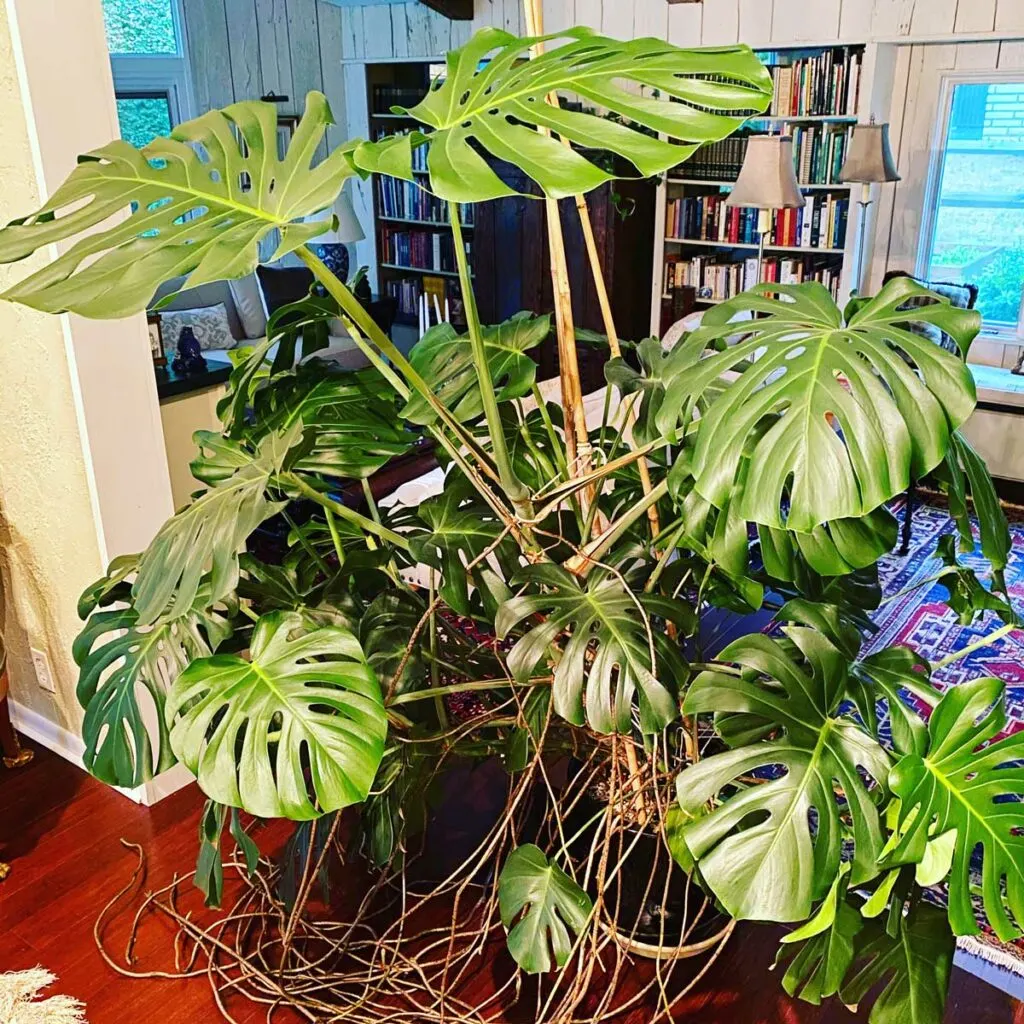
3. POT CONSTRUCTION & IMPLICATIONS ON MOISTURE NEEDS
The type of pot makes a huge difference in how you care for your plant. Here are some options to consider, along with pros and cons for each.
Whatever type of pot you choose, always ensure that it has a drainage hole! This is not optional.
PLASTIC POTS
Any type of plastic pot is best when your plant is small. As your plant grows and gets taller and supports like bamboo stakes or moss posts are needed, it’s much better to use a heavier pot so the plant is not easily knocked over.
When your plant is small, you can always grow it in a nursery pot and slip it inside of a more decorative cache pot.
UNGLAZED TERRA COTTA
Terra cotta pots can be both a blessing and a curse. If you tend to “overwater“, terra cotta can be a wonderful type of pot. Because of its porous nature of unglazed terra cotta, the potting mix will dry out much more quickly.
Some cons to using terra cotta is that it can dry out too quickly sometimes (depending on your watering habits, the type of potting mix, and growing conditions), especially smaller terra cotta pots.
The pots can also incur some maintenance as minerals in tap water and fertilizer salts building up on the pot itself. Some people love the patina it produces, while others don’t!
GLAZED CERAMIC OR GLAZED CLAY
My own Monstera deliciosa plant is growing in a large glazed ceramic pot. Because of its weight, it is very stable, even as the plant gets taller and taller on the bamboo tee pee I made, and there is no risk of knocking the plant over.

I recommend that any large ceramic pot like this be placed on a caster with wheels so that you can easily move your plant. Otherwise the weight will make it prohibitive to move.
Another benefit to using glazed ceramic pots versus terra cotta pots, is that glazed ceramic pots will retain more moisture. At some point, it’ll be very difficult to keep repotting your plant into larger and larger pots (you have to stop somewhere!) once you reach a certain size.
And as your plant gets more and more root bound, glazed ceramic pots will retain more moisture than terra cotta pots. And this will be a good thing, otherwise you’ll be needing to water way too frequently.
POTS WITH SAUCERS ATTACHED
These types of pots are very tricky, and I personally don’t like them, but it’s worth mentioning. I find that most pots that have saucers attached to them drain very slowly.
And if you have very large pots with attached saucers, it can be very annoying to deal with. Often times the attached saucers are pretty shallow and it can make a mess when you’re watering.
For this reason, I prefer using a separate, deep saucer to place under the pot (instead of a pot with an attached saucer). For large pots, when I have excess water accumulating after watering, I like to use a turkey baster to suck out excess water from the saucer so the plant is not sitting in water and risking root rot.
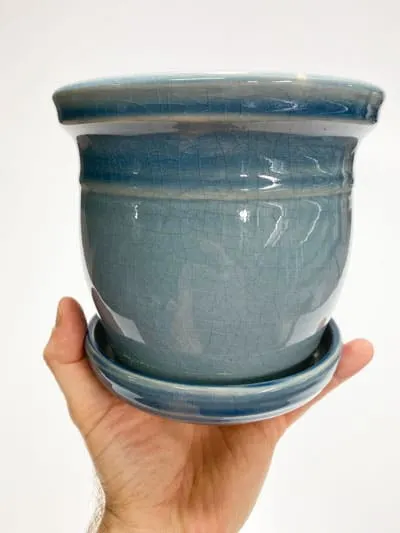
SELF-WATERING POTS
Self-watering pots have a time and place, but I wouldn’t recommend them for Monstera. These plants need to dry out somewhat in between watering and should not stay continually moist.
If you’re using a very chunky potting mix though, it can work, but it’s really not necessary, nor is it worth the trouble because you’ll have to repot fairly frequently as your plant grows.
The type and size of pot is only one consideration that affects the health of your Monstera plant, or any houseplant.
There are many other factors that you should consider simultaneously in order to have the healthiest houseplants possible, and they are: light, potting mix types, temperature, humidity, fertilization, and more.
I talk about the relationship between all of these factors in more detail in my book, Houseplant Warrior: 7 Keys to Unlocking the Mysteries of Houseplant Care.
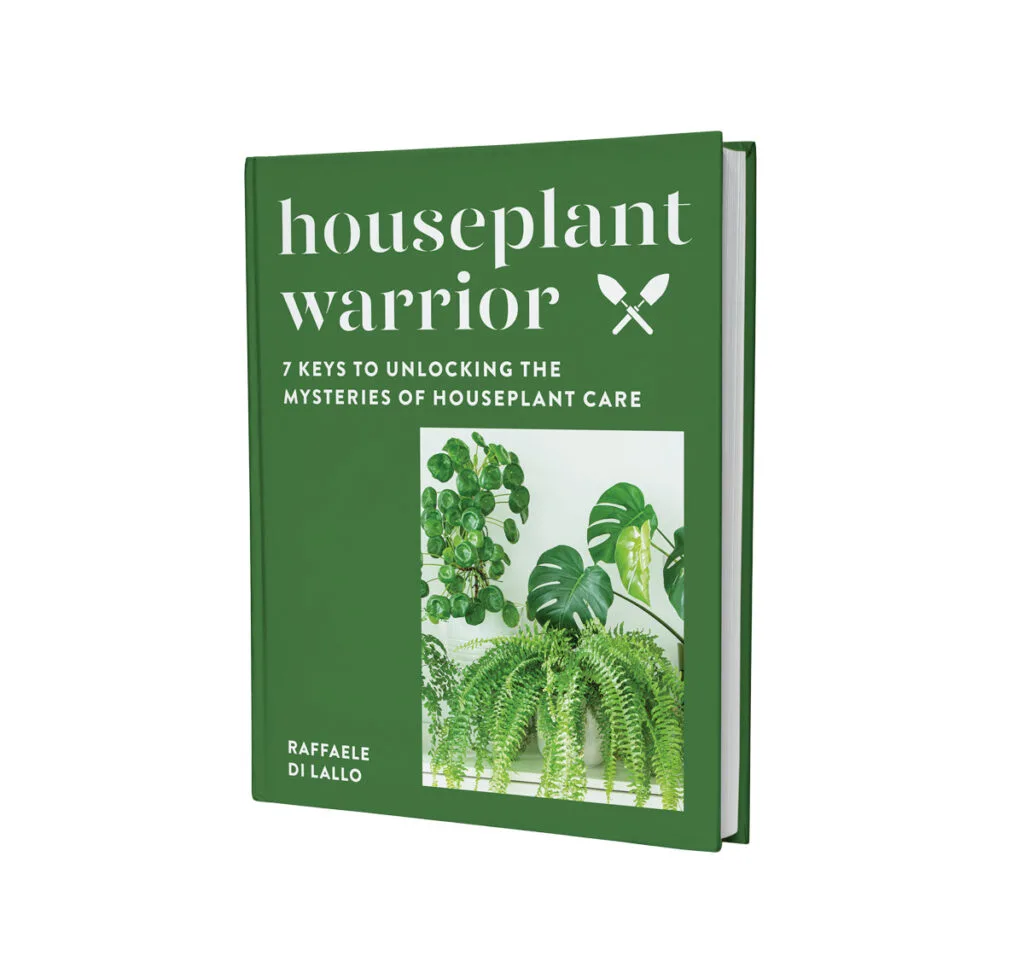
If you’re enjoyed this post, you may also enjoy my blog post Best Monstera Deliciosa Soil: #1 Guide to 3 Top Recipes to help you choose a good potting mix.
I hope you’ve enjoyed this post on Monstera pots! Comment below with any questions!

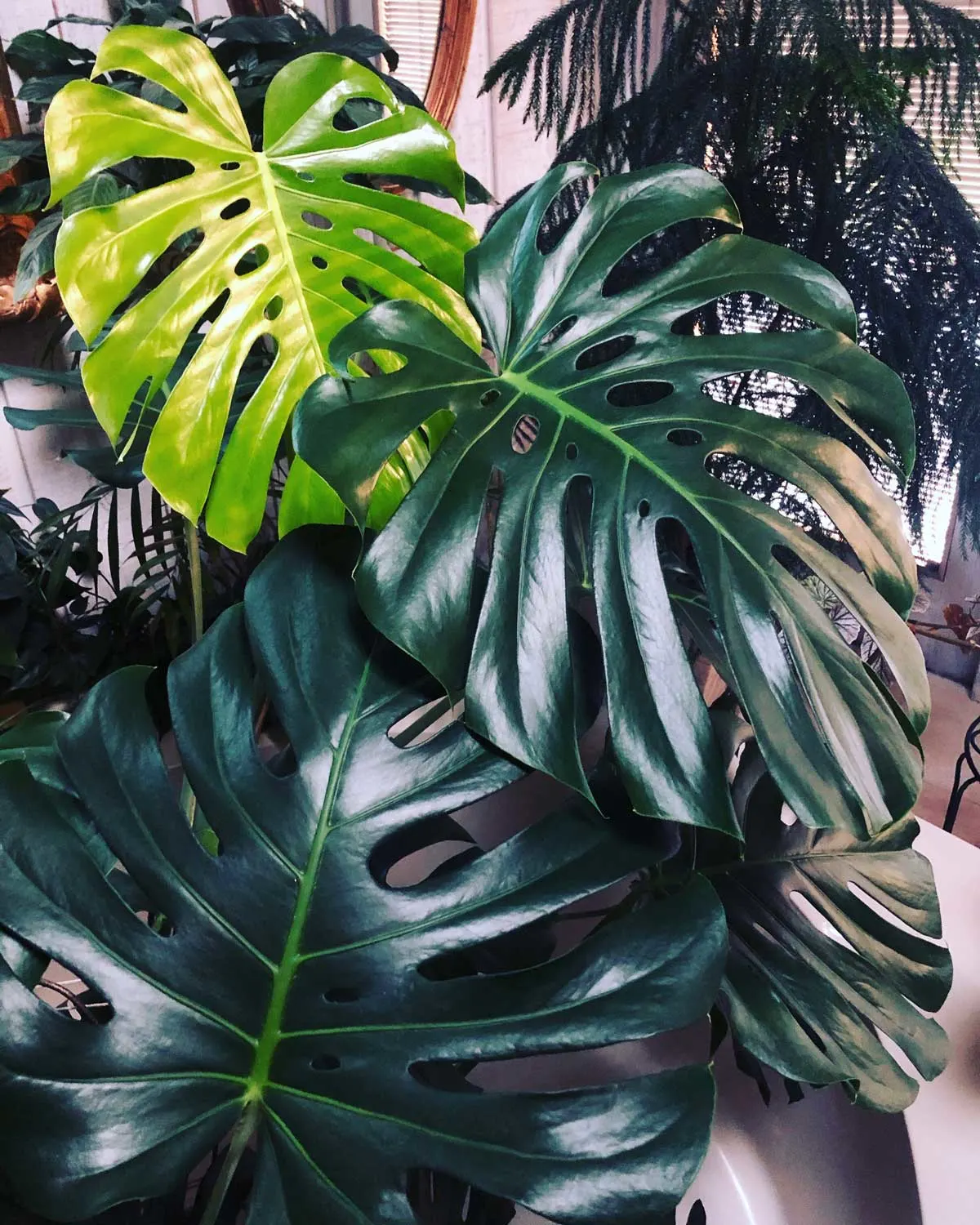
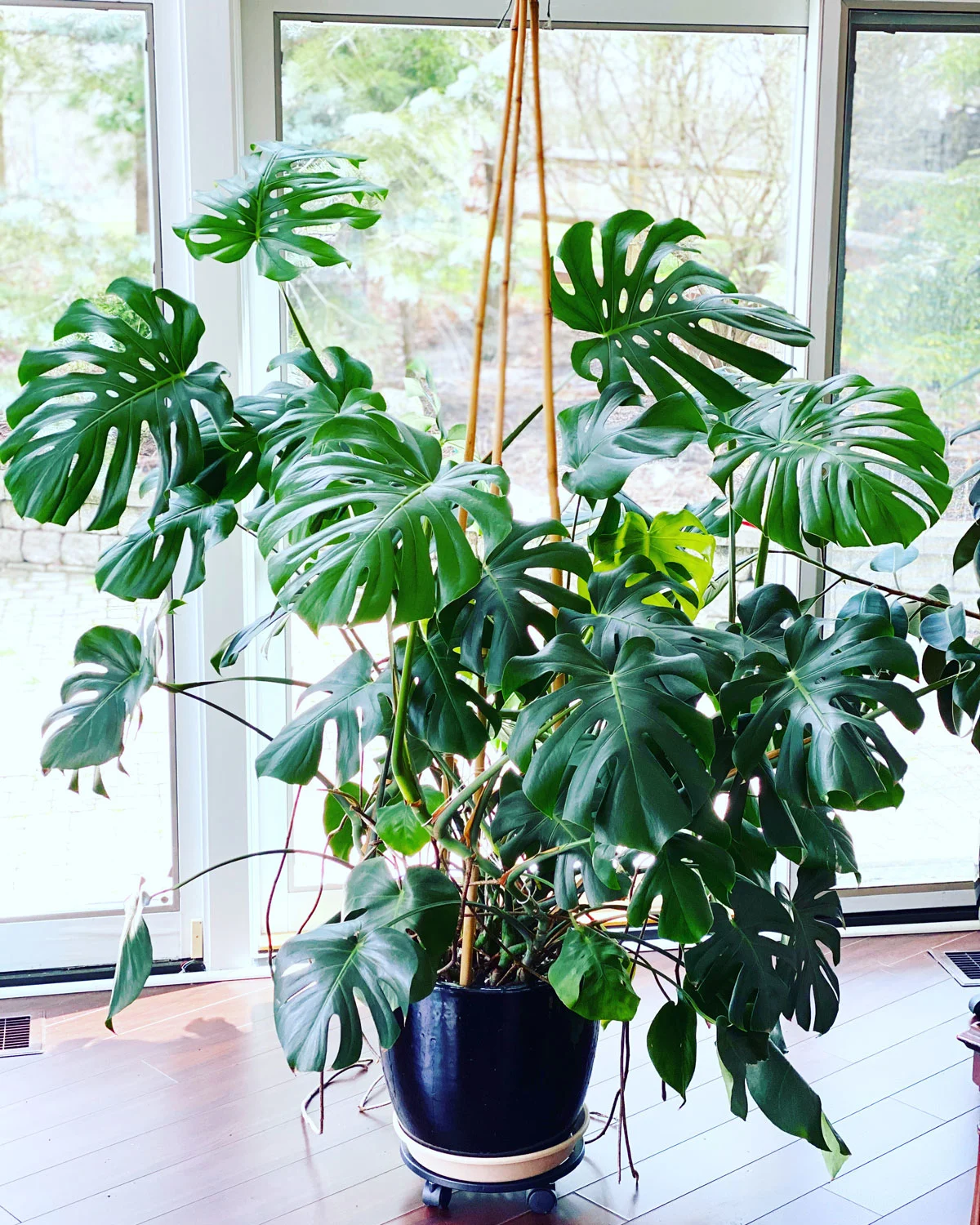
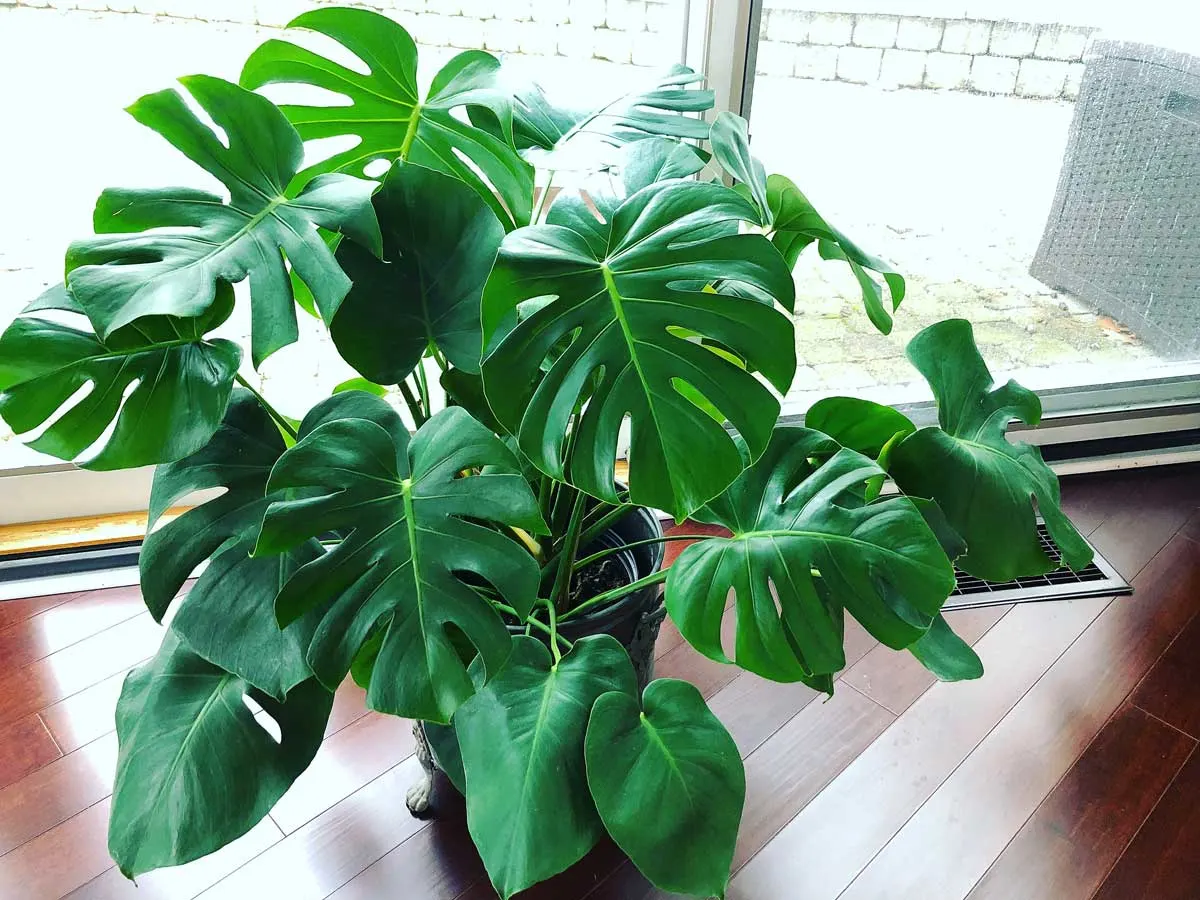
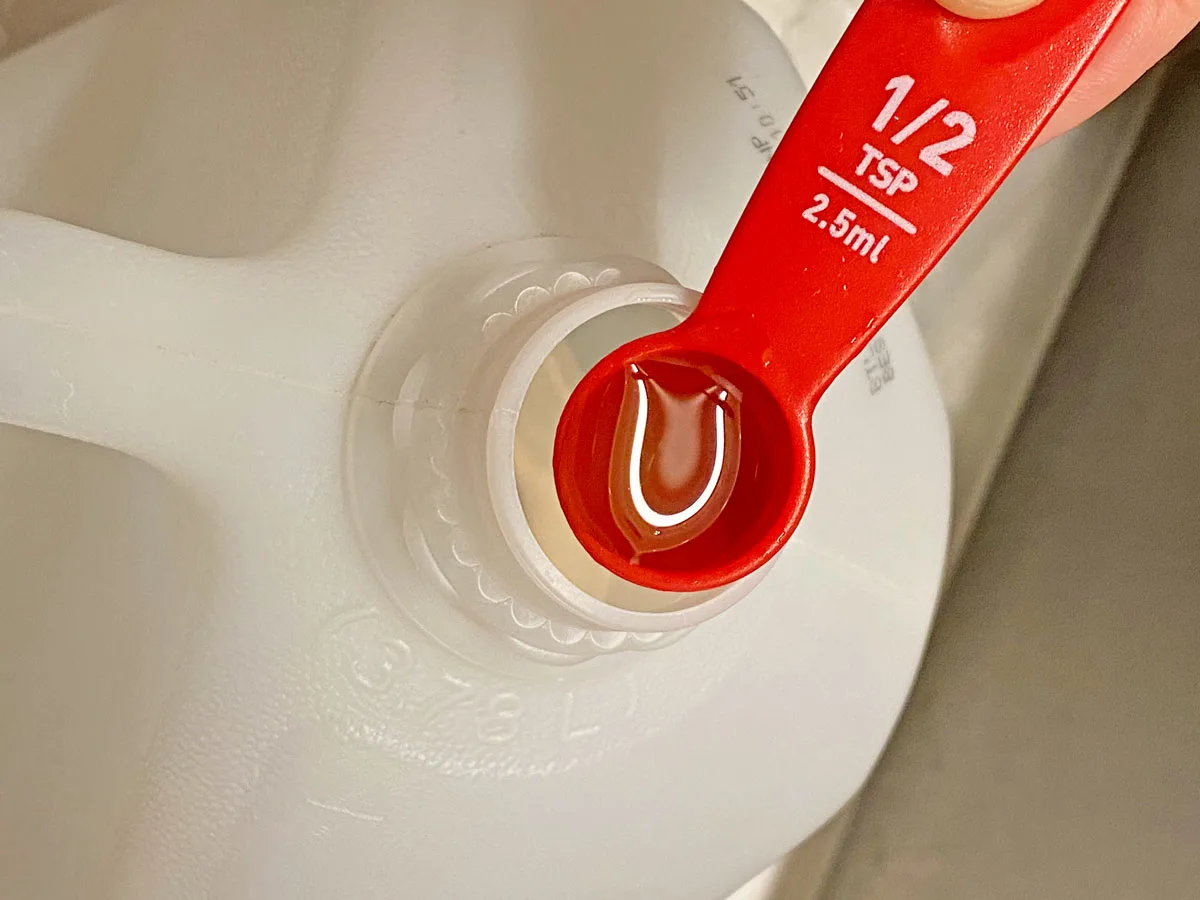
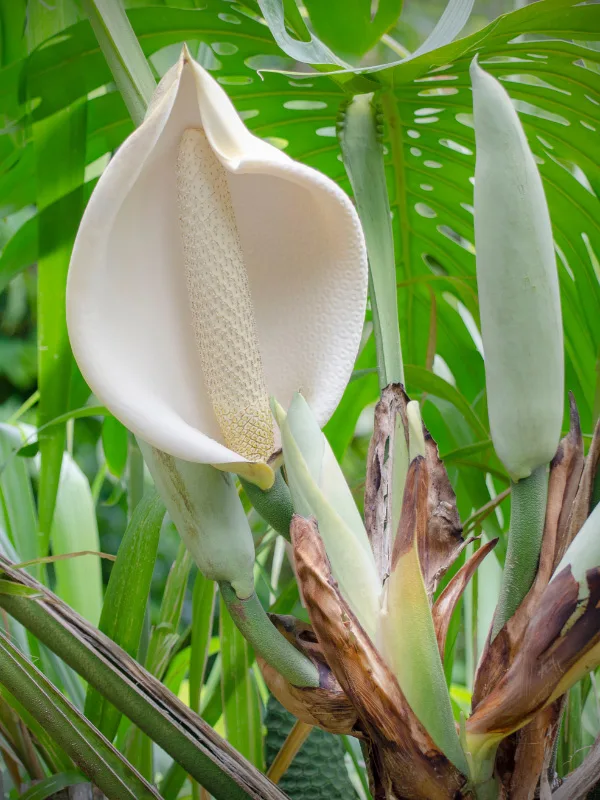
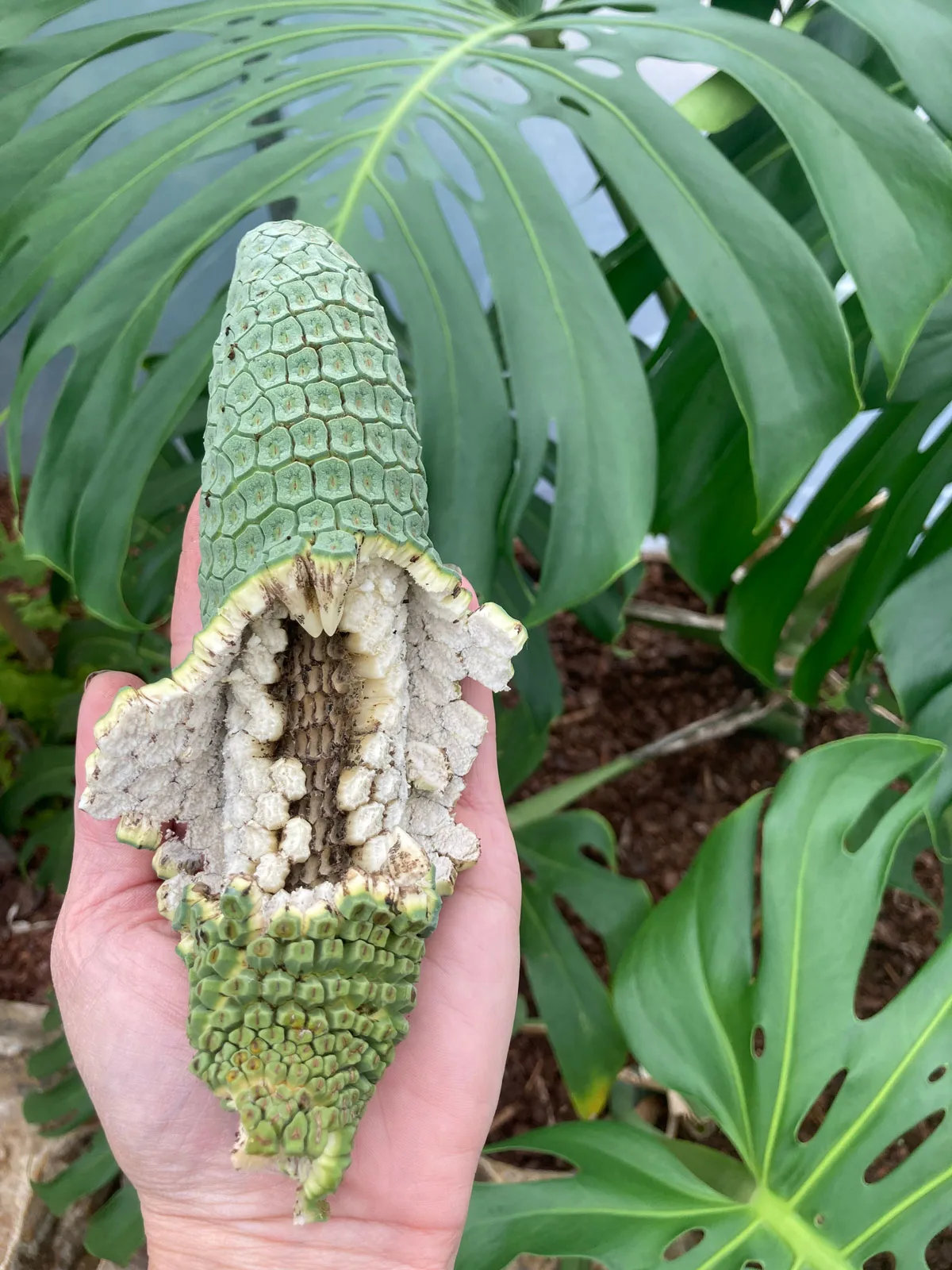
Sarah in Northern Norway
Saturday 4th of May 2024
Dude! Prolly the best plant info site I’ve found! Well written and straightforward with tons of useful tips. I have 3 Monstera delocia’s with shop-bought moss poles. I added the poles when I repotted a couple of yrs back. Absolutely none of the plants show any interest whatsoever in the poles! I’ve tied them to it (gently) with soft plant ties and tried twine ties too. I’ve even tried misting the moss poles in hope of creating a more tree-trunk-in-the-tropics like environment! Shall I ditch the poles and make a bamboo tripod instead? And, it OK to lop-off the ugly air roots?
Raffaele Di Lallo
Saturday 4th of May 2024
Glad you enjoy my site Sarah! You can certainly make a tripod, or even make your own moss pole. I have a tutorial and they are way better than store bought ones, and the roots do grow right into the moss! And yes, you can trim the air roots. I have a blog post on those as well if you want to check it out. Here is the moss pole tutorial: https://www.ohiotropics.com/2020/05/03/diy-moss-pole-how-to-make/ Monstera aerial roots: https://www.ohiotropics.com/2021/11/15/monstera-aerial-roots/
Sarah
Sunday 15th of October 2023
Writing from Central Florida, enjoyed your post a lot. A friend has given me several Delicioso fruit and they are wonderful. I have a Monstera plant growing up a palm tree that is 5 feet across it’s lovely I have about 50 fruit growing on it and my question is if it has fruit are they always edible. She says I have the wrong kind but I have.lots of fruit.I didn't know it took a year to ripen.
Raffaele
Sunday 15th of October 2023
I just know that Monstera deliciosa fruit is edible, but ONLY if it's ripe :-) And yes, they do take a long time to ripen! I'd suggest reading my blog post on it: https://www.ohiotropics.com/2021/11/01/monstera-deliciosa-fruit/
Lin
Thursday 12th of October 2023
Great info! Clear & consice!! I appreciate you sharing your knowledge! Thank you!
Raffaele
Thursday 12th of October 2023
You're very welcome Lin! I'm so happy that you enjoyed the post :-)
Catherine eaton
Friday 29th of September 2023
Your plant is amazing! So much great information. I just bought my first monstera plant. Thank you
Raffaele
Friday 29th of September 2023
Glad you enjoyed the post Catherine! Good luck with your plant.
Hayley
Wednesday 27th of September 2023
Hi Raffaele,
I am ready to transplant my monstera into a bigger container. Based on your info, I think I'm going to go with a ceramic planter. I am wondering if depth of the pot matters? For example, is a monstera going to be happier in a tall planter or one that is more short/squatty?
Raffaele
Thursday 28th of September 2023
Hi Hayley! I wouldn't worry too much about the depth, though I wouldn't use one that is too tall because your plant will get top-heavy and tip over more easily that way. Hope this helps a bit!